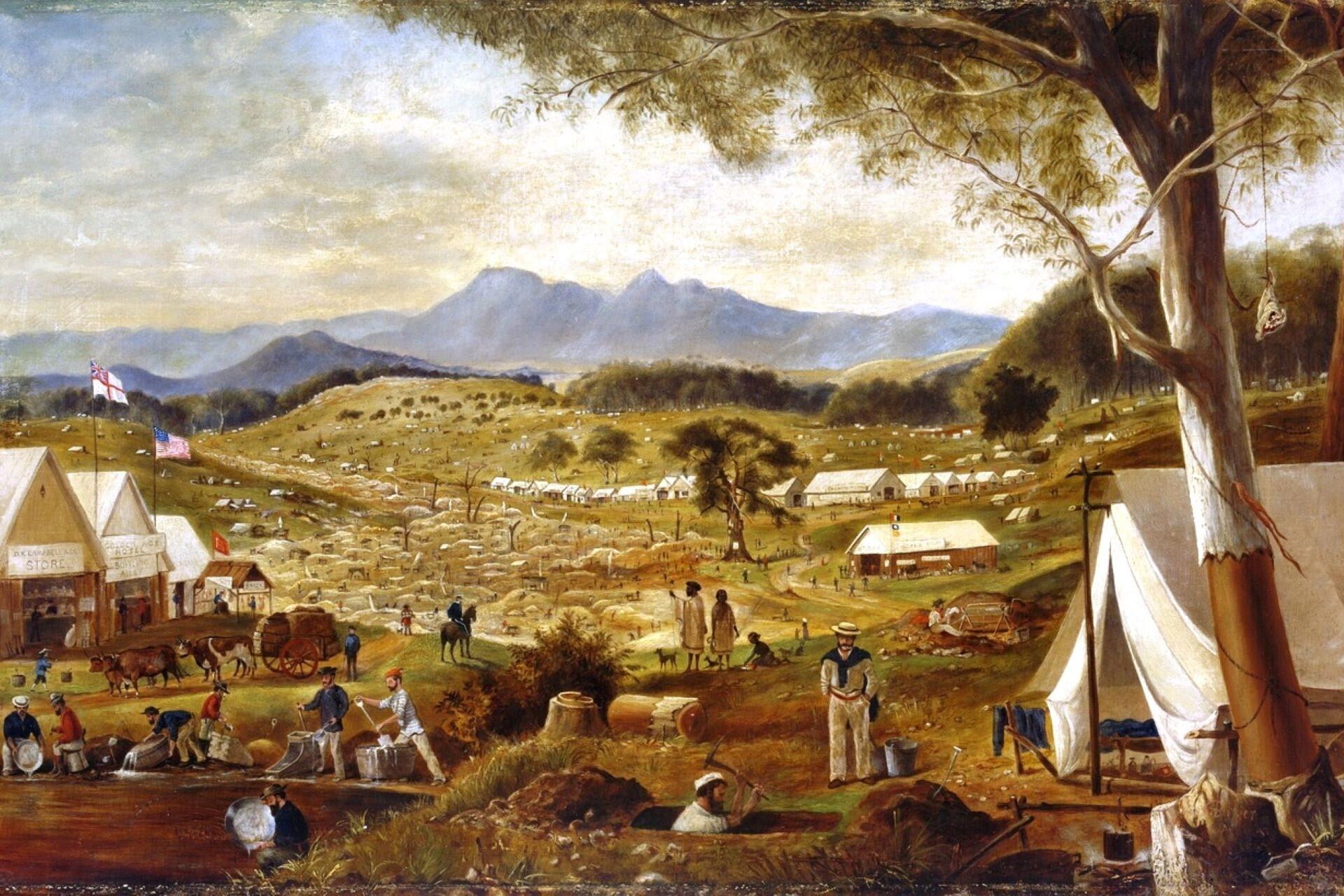The Australian gold rush in the mid-19th century transformed the young Australian colonies. It came with wealth, immigration, and sweeping social change. It may have started with the 1851 discovery at Ophir in New South Wales and subsequent finds in Victoria and beyond, but it would ultimately end with the Federation of Australia in 1901. From egalitarian ideas to racial tensions, here's how the Australian gold rush transformed the country.

Discovery at Ophir and the Birth of the Australian Gold Rush (1851)
The gold rush was a key part of Australian history. It began in 1851 with the discovery of gold at Ophir, near Bathurst in New South Wales. Smaller finds had been made earlier by William Tipple Smith in 1847 and James McBrien in 1823; however, the colonial government downplayed these discoveries to avoid disrupting the workforce.
However, when Edward Hargraves recognised the geological similarities of the area to the California goldfields, he confidently announced his find at Summer Hill Creek. He was given a government reward and the title of Gold Commissioner.
The Australian gold rush began in 1851 with Edward Hargraves’ discovery at Ophir near Bathurst, NSW, sparking thousands of diggers to flood the fields, and changing the continent forever.
News of the discovery spread quickly, and men and women from across Australia and overseas headed to the area. Thousands of miners (known as diggers) rushed to the goldfields with tents and tools. The rush turned sleepy rural settlements into booming frontier towns. This period reshaped colonial Australia's population, economy, and future.
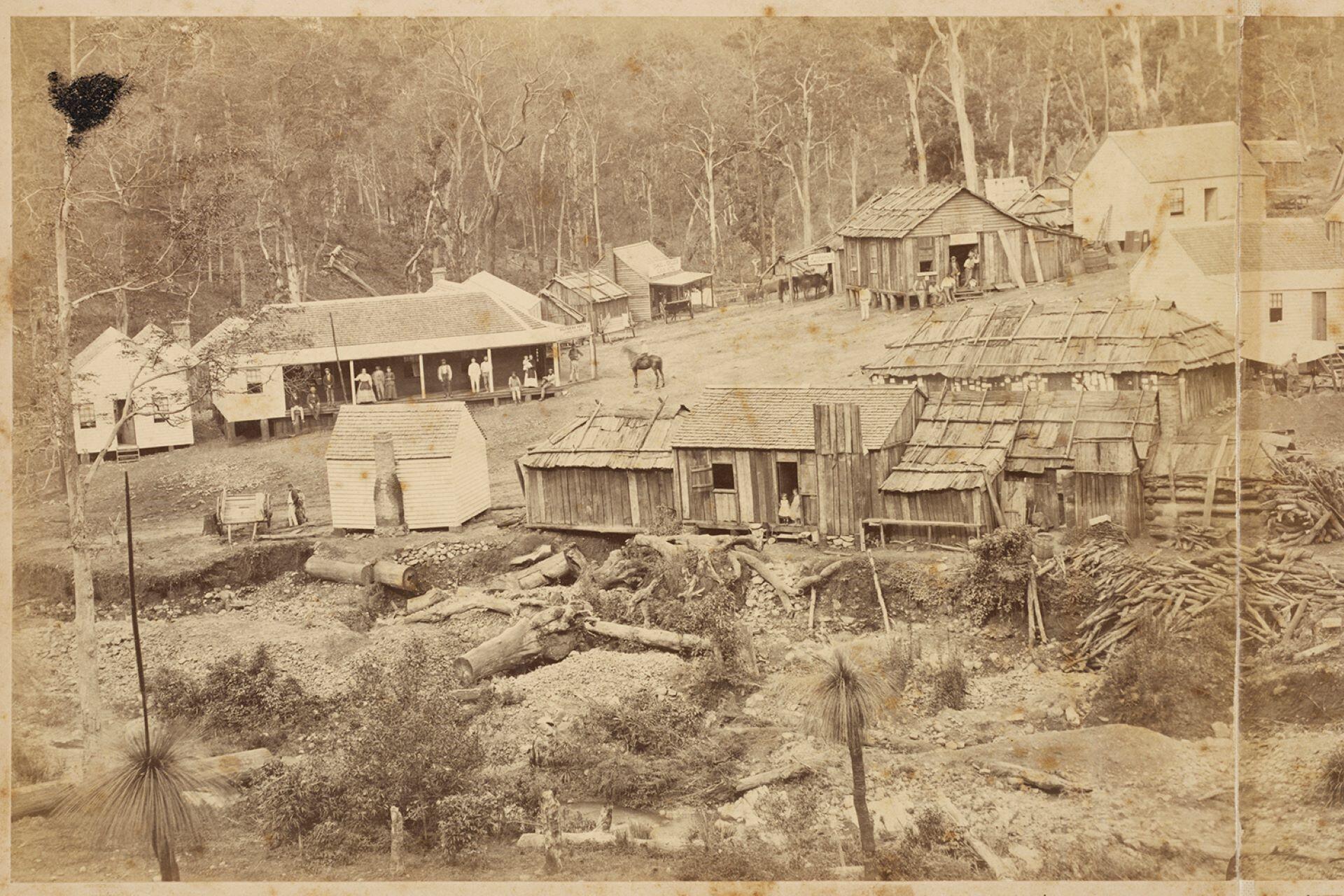
Boom and Immigration: Economic Impact of the Gold Rush
The Australian gold rush transformed the economics and demographics of colonial Australia in a manner that had never been witnessed before. In 1851, the population of the colonies was around 430,000. Within 20 years, it had tripled with mass immigration coming from Britain, Ireland, Europe, North America, and China.
The Victorian goldfields at Ballarat and Bendigo became some of the richest in the world, with thousands of diggers coming every month. The wealth from the goldfields transformed nearby towns and cities like Melbourne from modest settlements into major ports and commercial hubs.
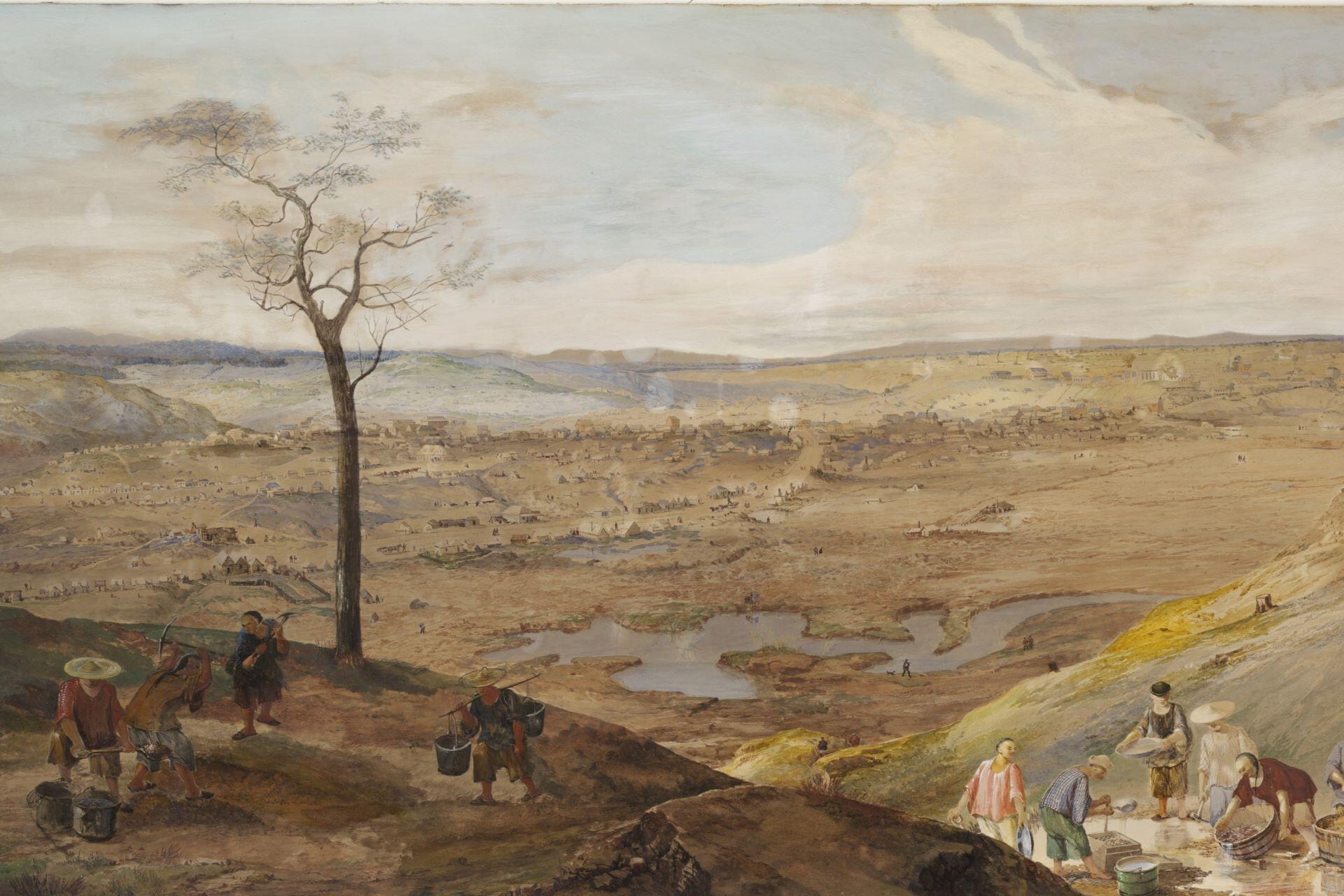
Infrastructure, such as roads, railways, and telegraph lines, expanded to connect goldfield regions to the rest of the state and colony. With increased wealth and larger populations, wages increased. With the increased demand for goods and services, a more diverse and cosmopolitan societies built up.
The government benefited massively from gold licence fees and export duties. The revenue was used to fund public works, libraries, schools, and civic buildings. However, there was also tension over the high fees imposed on miners and the discrimination faced by Chinese immigrants on the goldfields.
Between 1851 and 1871, Australia’s population surged from approximately 430,000 to 1.7 million, driven by gold rush immigration and reshaping the nation socially and economically.
Life on the Goldfields and the Digger Identity
Life on the goldfields during the Australian gold rush was marked by hope, hardships, and opportunities. Diggers lived in canvas tents or makeshift huts. They had to brave heat, cold, dust, and mud, and the work was physically demanding. Diggers spent long days digging shafts, panning in creeks, and hauling heavy loads of dirt and rock for washing. The goldfields were places of bustling activity, though, with traders selling food, clothing, and mining equipment.
Arrivals from England, Ireland, continental Europe, the Americas, and China led to tensions, which sometimes erupted into violence or discriminatory government policies. However, the shared struggles of diggers helped create connections across cultures, with a spirit of mateship and egalitarianism, something that the postwar immigration policies of Australia attempted to replicate.
Goldfield communities had their own systems or organisation that included miners' committees and mutual aid networks to settle disputes, organise entertainment, and protect the rights of diggers. The resentment over the high licence fees and the heavy-handedness of colonial authorities would set the stage for the Eureka Stockade.
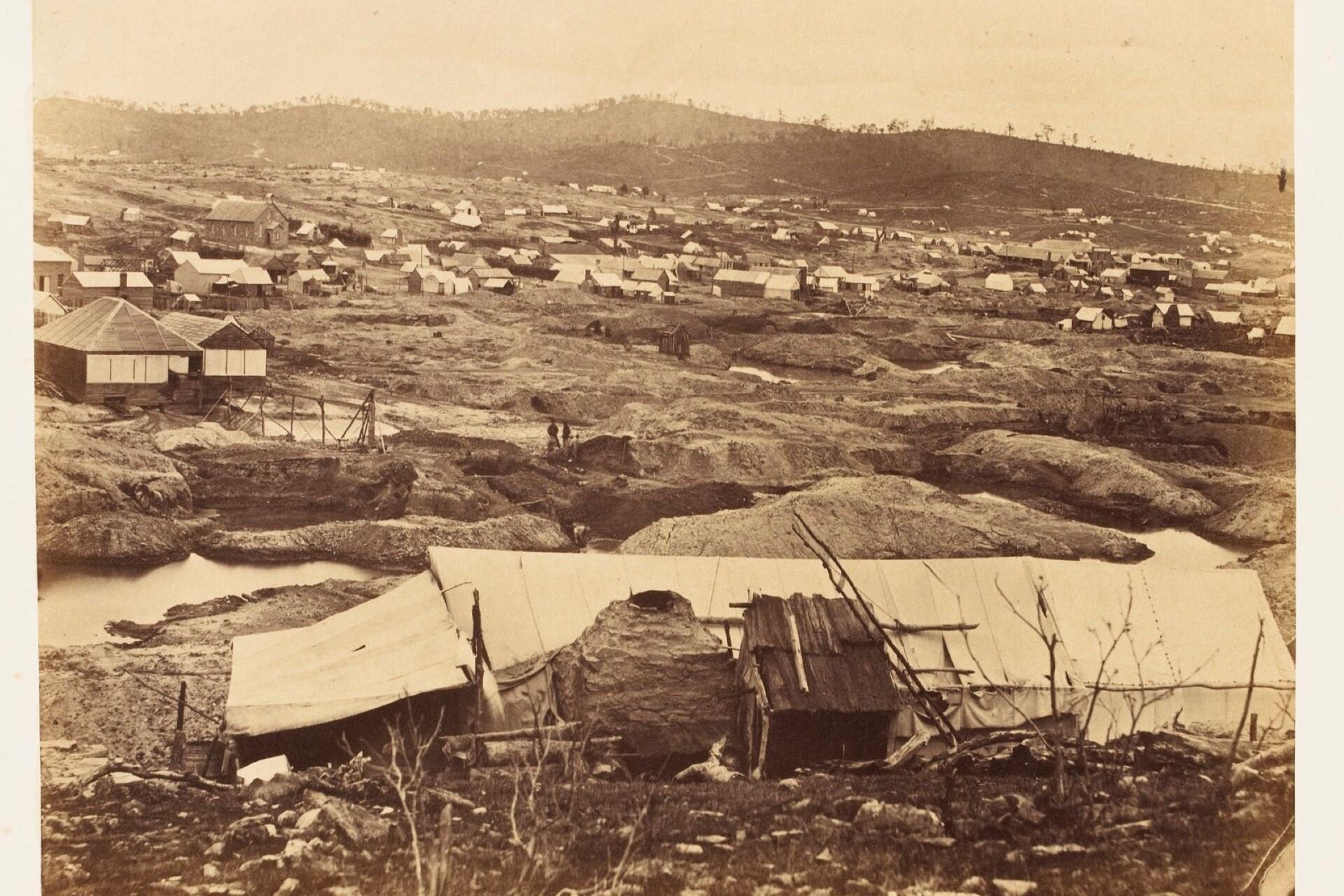

The Eureka Stockade and Push for Reform
On the Victorian goldfields and Ballarat, anger over high mining licence fees, aggressive policing, and a lack of political representation drove diggers to organise and resist. Led by figures like Peter Lalor, diggers built a rough wooden barricade at the Eureka diggings, swore an oath under the Southern Cross flag, and prepared to defend their rights.
On 3 December 1854, colonial troops attacked the stockade. Though the battle lasted less than 20 minutes, 22 diggers and several soldiers died and while it wasn't anywhere near as costly as the wars Australia would fight in after Federation, it was still pivotal. The rebellion at the Eureksa Stockade had been suppressed.
Still, public outrage over the violence compelled the government to make significant concessions. The licence system was replaced with a more affordable miner's right and miners gained the right to vote, which would lead to broader democratic reforms in colonial Australia.
The Eureka Stockade was a powerful symbol of resistance to injustice. It was celebrated in songs, literature, and poetry and many Australians viewed it as a pivotal moment in the country's development of democratic traditions.
Gold Rushes Across Colonial Australia
Although the first significant gold discoveries were made in New South Wales and Victoria, the gold rush soon spread to other colonies. Rich deposits at Bendigo, Ballarat, and other goldfields helped forge the state's reputation as the centre of gold mining during the 1850s and 1860s. Tens of thousands of people from across the globe came and turned Melbourne into one of the wealthiest cities of the time.
Smaller goldfield discoveries in the 1860s and 1870s in the western colonies were followed by massive finds in the 1980s at Coolgardie and Kalgoorlie, revitalising Western Australia's economy and infrastructure. In Queensland, there were significant strikes at Gympie, Charters Towers, and the Palmer River, resulting in a surge of miners to the tropical north.
The successive gold rushes were accompanied by migration, settlement, and economic changes across Australia. They also created tensions between the colonies over the movement of diggers, the regulation of mining licences, and the competition for labour.
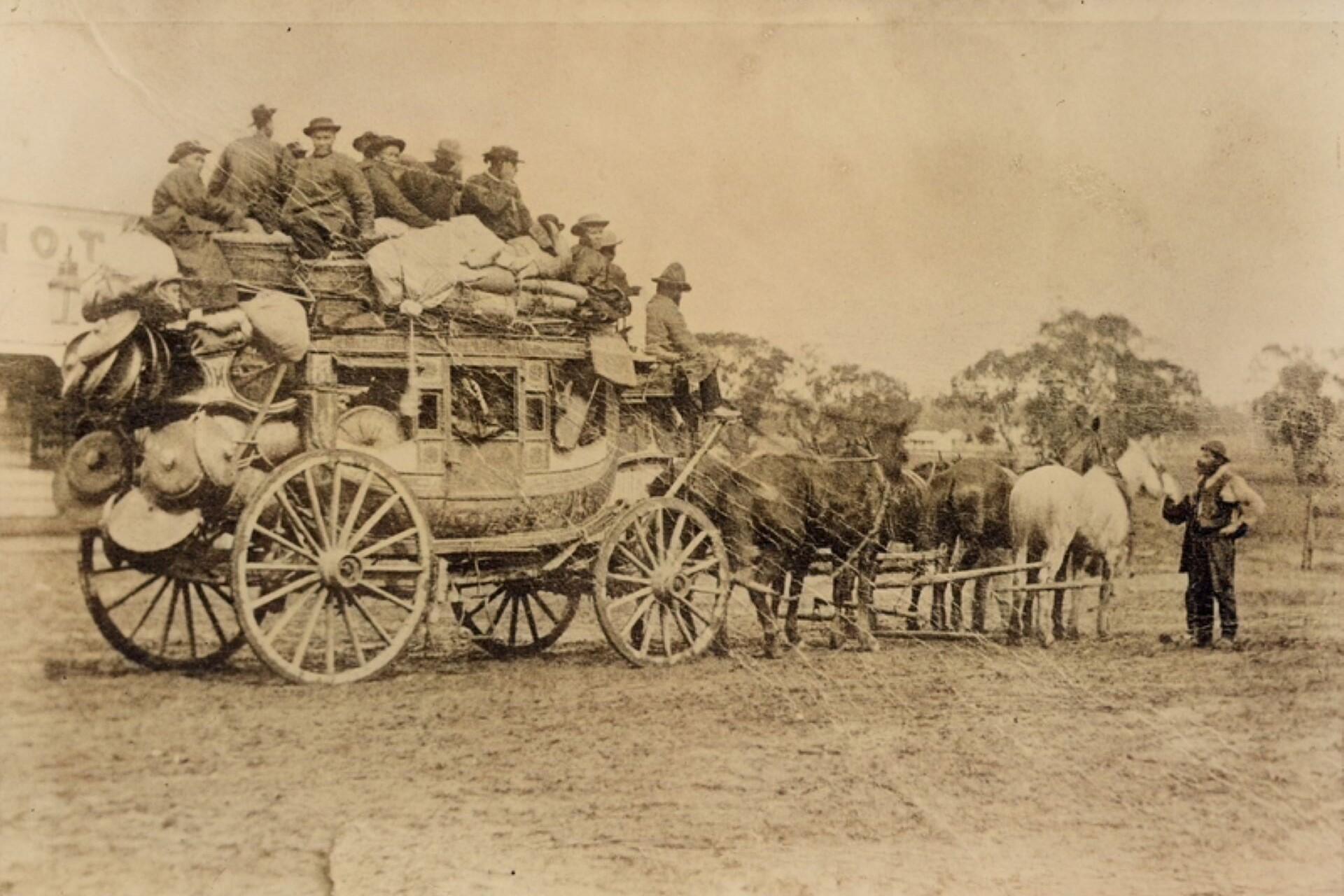
Social Change and Challenges on the Goldfields
The Australian gold rush changed the social landscape of colonial Australia. On the goldfields, the cultural mix of people from different backgrounds was pretty unique for the time.
Law and order were constant concerns, particularly with the rapid growth of towns such as Ballarat, Bendigo, and Melbourne. With fortune-seekers, there were also bushrangers, gamblers, and opportunists. Colonial authorities had to establish police outposts, courts, and gaols to exert control. Churches and schools arrived to meet the needs of these expanding populations.
However, for the Aboriginal communities, the gold rush came with further dispossession as traditional lands were taken over by prospectors and settlements, disrupting hunting grounds and sacred sites.
Certain ideas, such as democracy, rights, and representation, were nurtured during the Gold Rush. Miners' meetings, petitions, and public debates on the goldfields helped set the tone for later reforms in the coming decades.
Self-Government and Political Transformation
The Australian gold rush came with wealth, population growth, and political consciousness that would accelerate the push for self-government in the colonies and away from the British influence that had been there since the arrival of the First Fleet.
In the 1850s, Victoria and New South Wales achieved responsible government, with other colonial administrations in South Australia, Tasmania, and Queensland coming afterwards. Elected representatives had greater control over local laws, finances, and infrastructure, with the direct influence of the British Parliament reduced.
Events like the aforementioned Eureka Stockade reshaped political life. Miners who were once excluded from the vote could now participate in elections. Reforms such as the secret ballot and broader male suffrage were also introduced. Skilled individuals from around the world brought new ideas about governance, equality, and civil rights, shaping the political debate in Australia.
The growing economic independence and thriving cities, such as Melbourne and Sydney, boosted national confidence. The colonies saw themselves as more than just outposts of the British Empire. They viewed themselves as partners within it who could chart their own political course while still maintaining their ties to the British Crown. This would be one of the final steps from colony to the Federation of Australia.
1851
Gold Discovered at Ophir
Edward Hargraves triggers the first major gold rush, drawing hundreds to NSW.
1852–1854
Boom of Victoria’s Goldfields
Victoria's goldfields at Ballarat and Bendigo lead to mass migration and the rise of "Marvellous Melbourne."
3 December 1854
Eureka Stockade Rebellion
Diggers in Ballarat clash with colonial troops—22 miners and several soldiers killed. The uprising sparks democratic reforms.
1855
Political Reforms Follow
The hated mining licence is replaced with a cheaper Miners’ Right, and miners win the vote.
1871
Population Milestone
Australia’s population reaches 1.7 million, a fourfold increase in two decades, setting the stage for a more confident, diverse society.
From Colonial Australia to the Federation of Australia
The effects of the Australian gold rush were evident in the thriving cities, the diverse population, and the colonial economies. Shared prosperity and the challenges of the goldfields had fostered economic growth and a sense of unity among colonies. With the development of improved transport and communication networks, including railways, telegraph lines, and shipping routes, intercolonial trade and cooperation became increasingly important in the country.
The movement towards a Federation of Australia gained momentum in the 1890s, driven by a desire for unified defence, standardised trade policies, and a stronger national identity. Leaders from Victoria, New South Wales, South Australia, Queensland, Western Australia, and Tasmania convened at conventions to draft a constitution that would strike a balance between state autonomy and federal authority.
The document drew upon the democratic reforms during Australia's colonial era. It built upon the lessons from the Eureka Stockade and the ethos of diggers. On 1 January 1901, the Federation of Australia came into being. The six colonies were united into a single nation under the Commonwealth. The path to the Federation of Australia had been paved with gold.

